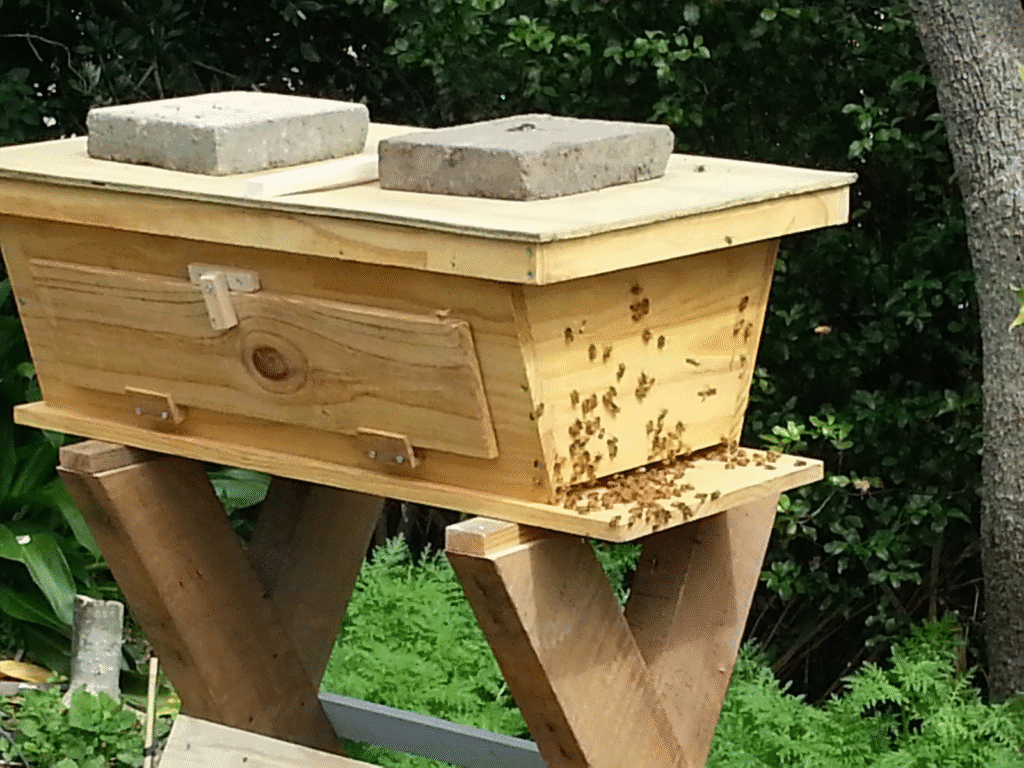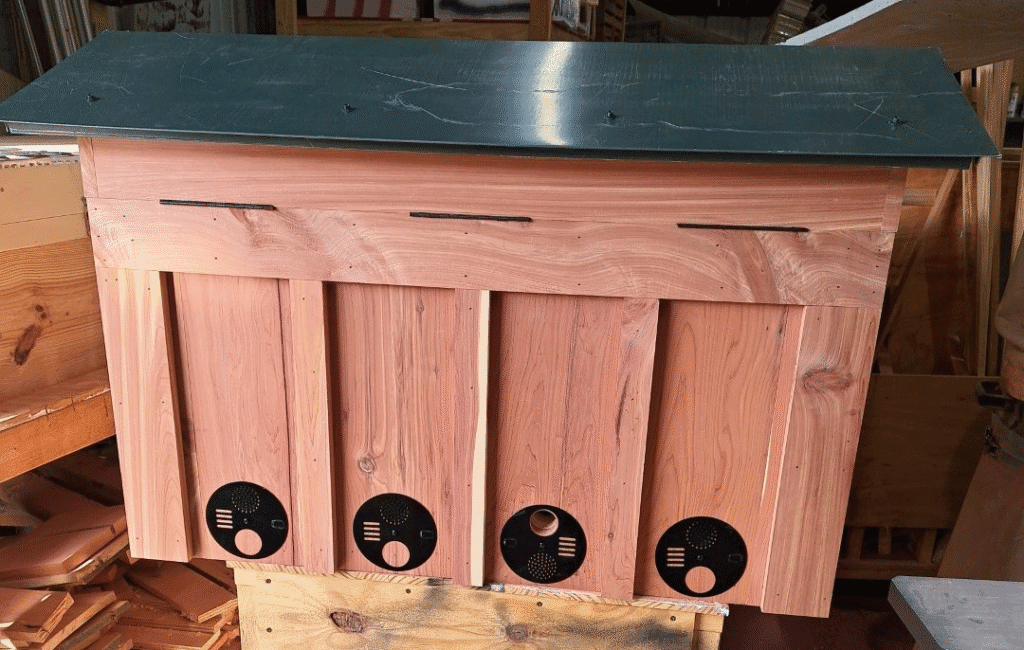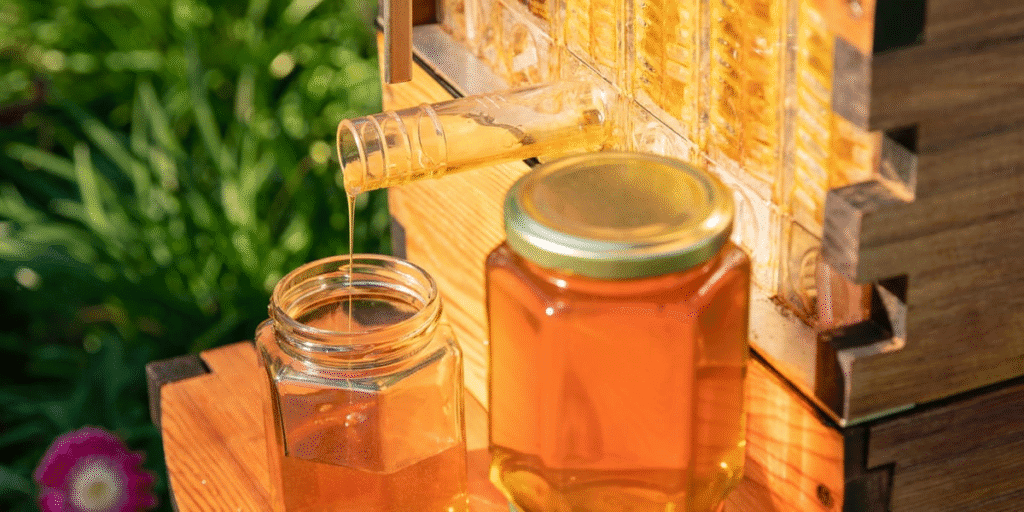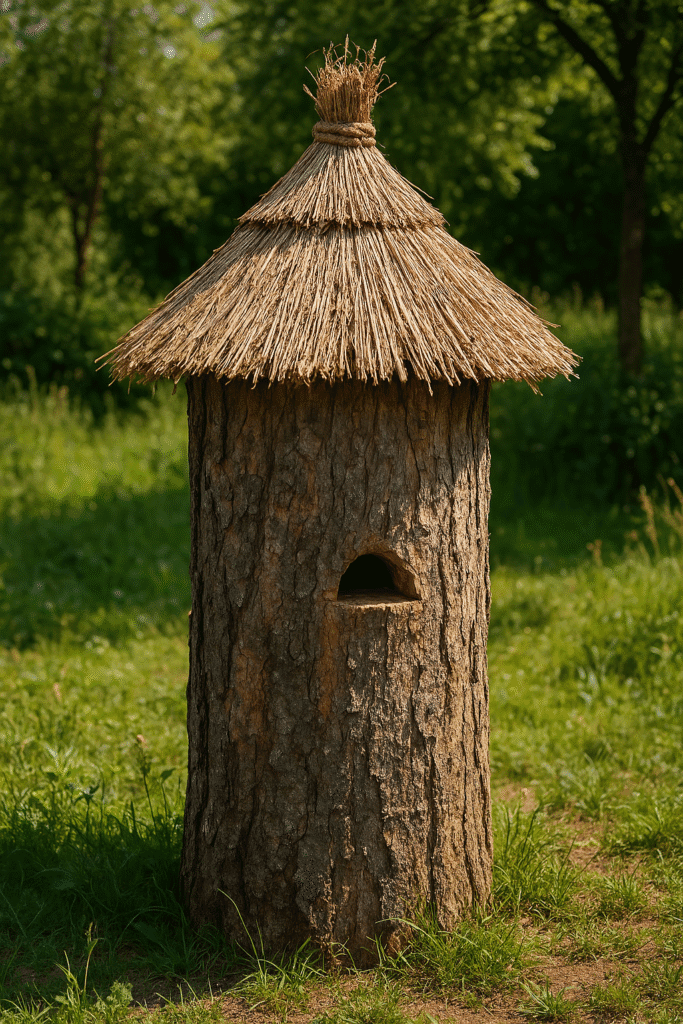Discover the most popular types of beehives including Langstroth, Top-Bar, Warre, and more. Learn their features, benefits, and which hive best suits your beekeeping needs in 2025 and future
Introduction
Choosing the right beehive is essential for successful beekeeping. Different hives offer unique benefits depending on your goals—whether it’s commercial honey production, natural beekeeping, or supporting wild pollinators. Below is a comprehensive guide to the 10 most effective beehive types, complete with key features, pros, cons, and ideal use cases.
1 Langstroth Hive
Invented by: Rev. Lorenzo Langstroth (USA, 1851)
Despite its effectiveness, the Langstroth hive requires regular maintenance to prevent issues such as pests and diseases. Beekeepers who prioritize honey yield and ease of management often opt for this classic hive design. Choosing the right beehive is essential for successful beekeeping. Different hives offer unique benefits depending on your goals—whether it’s commercial honey production, natural beekeeping, or supporting wild pollinators. Below is a comprehensive guide to the 10 most effective beehive types, complete with key features, pros, cons, and ideal use cases.

Features:
- Modular stacked boxes (supers and brood boxes)
- Removable frames with bee space
- Compatible with queen excluders and honey supers
- Available in deep, medium, and shallow sizes
- Materials: Wood or plastic
Advantages:
- Easy to expand and inspect
- Great for honey production
- Widely supported by suppliers
Disadvantages:
- Heavy to lift during inspections
- Requires multiple components
Best For:
Professional and hobbyist beekeepers focused on productivity and efficiency.
2. Top Bar Hive (TBH)

Origin: Ancient Greece; modern use in Africa and the Americas\
Features:
- One horizontal box with 24–30 wooden bars across the top
- No foundation; bees build natural comb
- Often sloped or trapezoidal in shape
- Requires a follower board to control space
Advantages:
- Minimal equipment required
- Easier and cheaper to construct
- Gentle on bees
Disadvantages:
- Honey harvest requires comb destruction
- Less honey compared to Langstroth
Best For:
Backyard or small-scale natural beekeeping in warm climates.
3. Warre Hive

Invented by: Abbé Émile Warré (France)
Features:
- Vertical hive with square boxes
- Top bars or optional frames
- Quilt box and roof for insulation
- Nadiring: new boxes added at the bottom
Advantages:
- Mimics natural tree cavities
- Encourages healthy brood nesting
- Less invasive inspections
Disadvantages:
- Difficult to manage for beginners
- Lower honey yield
Best For:
Organic beekeepers seeking low-maintenance and bee-centric designs.
4. Layens Hive

Invented by: Georges de Layens (France)
Features:
- Single horizontal chamber
- 20–30 deep, extra-wide frames
- Thick-walled design for insulation
- Hinged or removable top cover
Advantages:
- Superior thermal insulation
- Easy inspections with deep frames
- Minimal disturbance
Disadvantages:
- Less common in retail stores
- Limited scalability for large operations
Best For:
Beekeepers in colder regions, or those prioritizing colony health over production.
5. Kenyan Top Bar Hive (KTBH)

Origin: East Africa, adapted from traditional hives
Features:
- Trapezoidal shape with sloped sides
- 20–27 top bars for natural comb
- Observation windows in some designs
- No frames or foundation required
Advantages:
- Affordable and locally made
- Ideal for stingless bees and tropical areas
- No lifting of heavy boxes
Disadvantages:
- Comb collapse risk if poorly built
- Less honey per harvest
Best For:
Low-income communities, training centers, and sustainable rural beekeeping.
6. Long Langstroth Hive

Design: A horizontal variation of the traditional Langstroth hive
Features:
- One long box using standard Langstroth frames
- Fixed base with hinged or removable lid
- Can hold 30–40 frames in a row
- Great ventilation options
Advantages:
- No lifting of heavy supers
- Standard frames and equipment compatible
- Comfortable for older or disabled beekeepers
Disadvantages:
- Larger footprint
- Not easily transportable
Best For:
Urban beekeepers or those with limited physical strength.
7. Flow Hive

Invented by: Cedar and Stuart Anderson (Australia)
Features:
- Modified Langstroth hive with Flow Frames
- Built-in honey harvesting mechanism
- Transparent panels for observation
- Food-grade plastic honeycomb cells
Advantages:
- Harvest honey without opening hive
- Very low disturbance to bees
- Great educational tool
Disadvantages:
- Expensive startup cost
- Must still inspect brood areas manually
Best For:
Beginners, educators, and hobbyists who want simplicity and tech innovation.
8. Skep Hive

History: Pre-modern Europe and Middle East
Features:
- Woven straw or wicker domes
- No frames or movable comb
- Often set on a wooden base
- Decorative or educational use today
Advantages:
- Low cost and historically rich
- Encourages natural behavior
Disadvantages:
- Illegal in many countries (non-inspectable)
- Difficult to manage disease or harvest cleanly
Best For:
Cultural exhibitions and historical beekeeping displays.
9. Apimaye Hive

Origin: Turkey
Features:
- Insulated plastic walls (double-layered)
- Built-in pest control trays and ventilation
- Compatible with Langstroth frames
- Latches for secure transportation
Advantages:
- Ideal for hot/cold climates
- Extremely durable and hygienic
- Transport-friendly for migratory beekeeping
Disadvantages:
- Not biodegradable
- Higher initial cost
Best For:
Commercial or migratory beekeepers operating in extreme environments.
10. Log Hive

Used by: Ancient forest dwellers, conservationists
Features:
- Hollowed-out logs or wooden stumps
- Often mounted vertically or horizontally on trees
- Mimics wild bee nests
- Requires minimal or no intervention
Advantages:
- Encourages biodiversity
- Suitable for native and stingless bees
- Long-lasting with low maintenance
Disadvantages:
- Not harvest-friendly
- Can’t inspect or treat for disease
Best For:
Wild bee conservationists and rewilding projects.
Summary Table: Compare Key Features
| Hive Type | Frames? | Honey Yield | Bee Disturbance | Cost | Ideal Use |
|---|---|---|---|---|---|
| Langstroth | Yes | High | Moderate | $$$ | Commercial/hobby beekeeping |
| Top Bar | No | Medium | Low | $ | Natural, organic beekeeping |
| Warre | Optional | Medium | Very Low | $$ | Biodynamic, low-intervention |
| Layens | Yes | Medium | Low | $$ | Cold climates, bee health |
| Kenyan TBH | No | Medium | Low | $ | Rural and tropical regions |
| Long Langstroth | Yes | High | Low | $$$ | Urban/elderly beekeepers |
| Flow Hive | Yes | Medium | Very Low | $$$$ | Beginners, educators |
| Skep | No | Low | High | $ | Educational, historical use |
| Apimaye | Yes | High | Low | $$$$ | Extreme climate beekeeping |
| Log Hive | No | Low | Very Low | $$ | Wild bee conservation |
Frequently Asked Questions (FAQs) About Beehive Types
1. What are the main types of beehives used in modern beekeeping?
The most common types include Langstroth hives, Top-Bar hives, Warre hives, Flow Hives, Kenyan Top-Bar hives, and Log hives. Each serves different purposes depending on your goals—whether for honey production, bee conservation, or natural beekeeping.
2. Which beehive is best for beginners?
The Langstroth hive is ideal for beginners due to its structured design, ease of inspection, and compatibility with standard beekeeping equipment. It’s also well-documented in guides and tutorials.
3. What type of hive produces the most honey?
Langstroth and Flow Hives are known for their high honey yields, making them excellent choices for hobbyists and commercial beekeepers alike.
4. Are Top-Bar hives good for honey production?
Top-Bar hives can produce honey, but usually in smaller quantities compared to Langstroth hives. They are better suited for natural beekeeping and small-scale harvesting.
5. What is the most natural type of beehive?
Log hives and Top-Bar hives allow bees to build comb naturally and mimic their wild environments, making them more bee-centric and ideal for conservation efforts.
6. Can I build my own beehive?
Yes! Many beekeepers build Top-Bar hives or Kenyan Top-Bar hives using local or recycled materials. Plans are widely available online, and they’re great for DIY enthusiasts.
7. Do different bee species prefer different hives?
Yes. For example, stingless bees do well in Kenyan Top-Bar hives or horizontal log hives, while Apis mellifera (European honeybee) adapts well to Langstroth, Top-Bar, and Warre hives.
8. Is the Flow Hive good for the bees?
The Flow Hive minimizes disturbance during honey harvesting, but some beekeepers argue it may reduce bee interaction and proper hive management. Proper use and inspections are still necessary.
9. What’s the difference between Warre and Top-Bar hives?
The Warre hive is vertical, with boxes added underneath, while the Top-Bar hive is horizontal. Warre hives mimic natural vertical nesting, while Top-Bar hives allow for easier, ground-level access.
10. Which hive is best for small spaces or urban areas?
The Flow Hive and Top-Bar hive are great for urban settings due to their compact size, ease of use, and minimal disturbance during inspections and harvesting